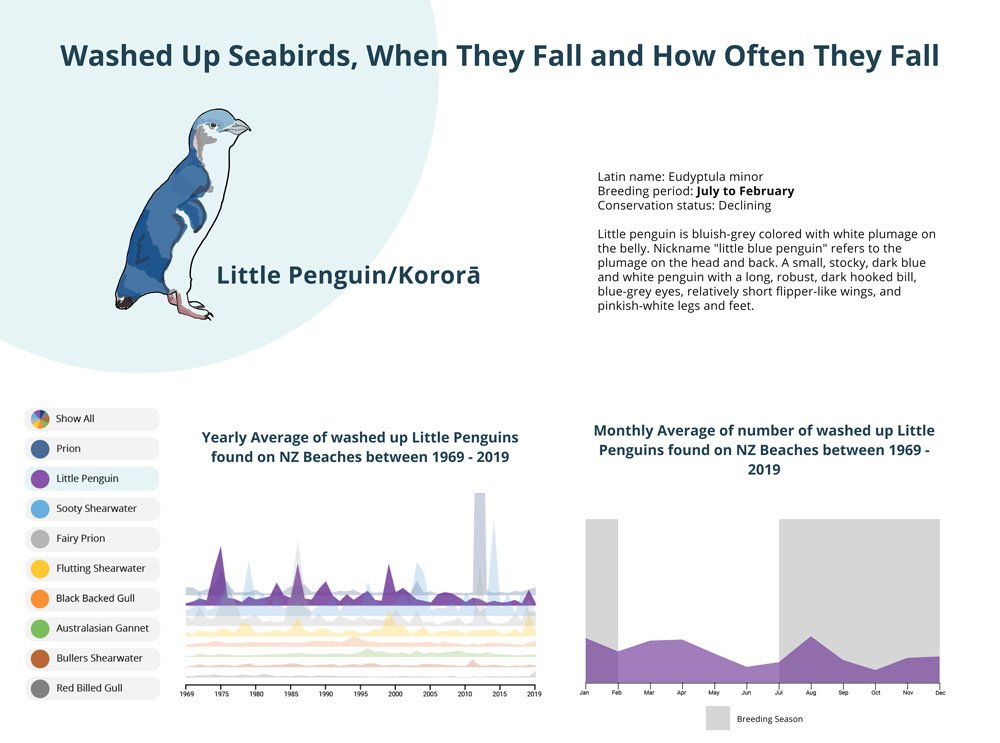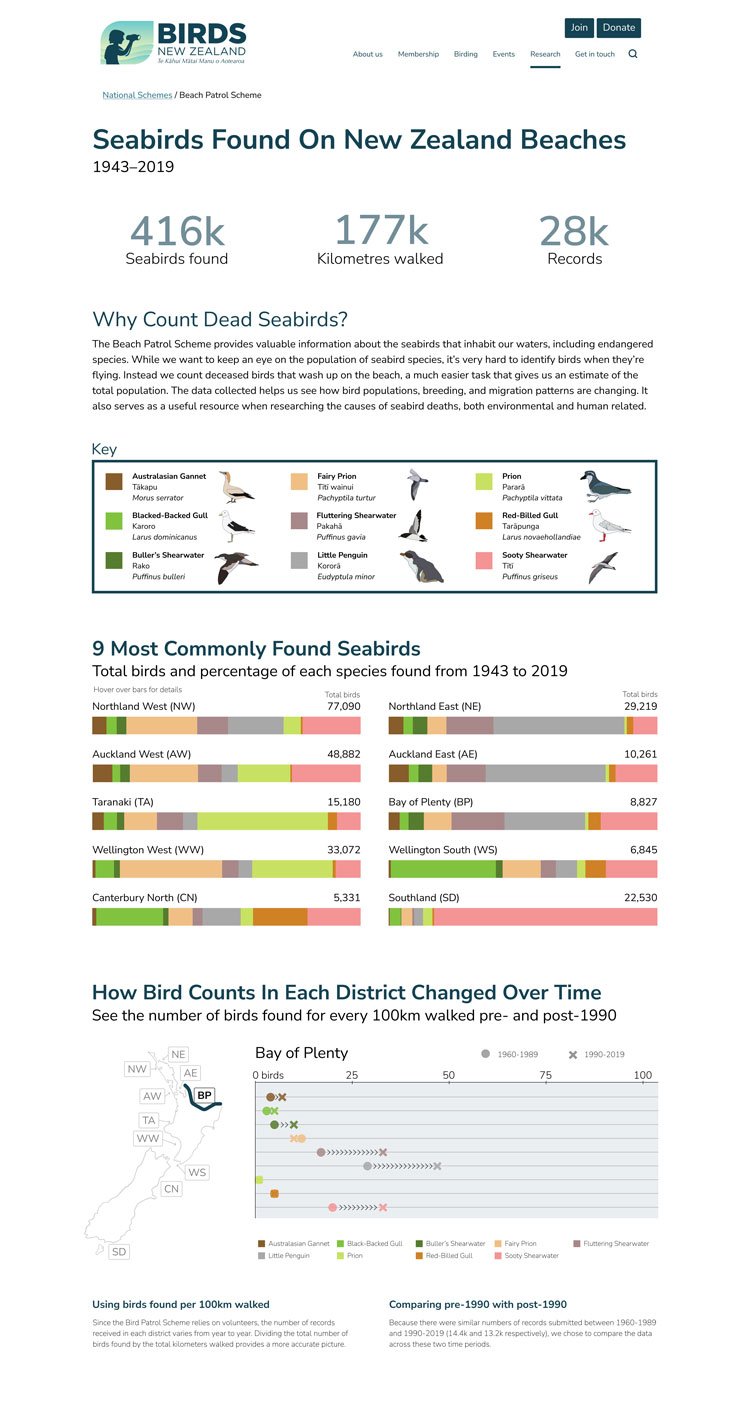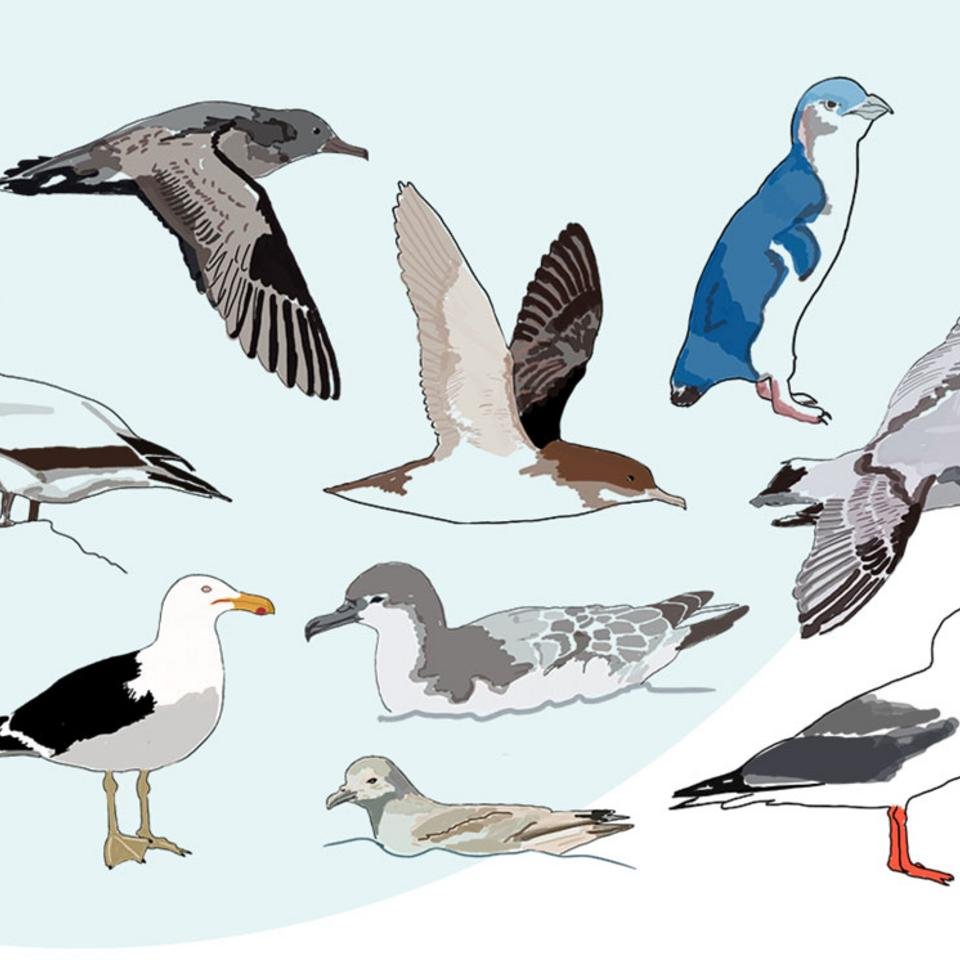The numbers of seabirds found dead on beaches across the country is a large collection of records managed by Birds New Zealand. It proved to be an interesting dataset for user experience design students from Victoria University of Wellington to try out the skills they’ve been learning.
The data has been collected over decades by volunteers who walk stretches of a beach searching the high tide mark to record any dead birds they find. While prions are the most commonly found species – usually in ones and twos – ‘wrecks’ of hundreds of birds have also been recorded after large storms.
Students worked in groups to prepare interactive presentations of the data. They used attractive graphical elements to help users explore the dataset in different ways, by being able to select a region or species for example. An emphasis on accuracy was carried through the work. The presenters highlighted important points and discussed some of the challenges and limitations they had encountered.
Edward had previously met with the students to help interpret the data, offer guidance and answer questions. Ian Armitage from Birds New Zealand also attended the presentation.

“The beach patrol project is now 75 years old. A huge amount of data has been collected and is being used by academics at a number of universities for ornithological research into climate change, seabird mortality at sea from fishing longlines and nets”, Ian says.
Dragonfly has been involved in creating an online database for the beach patrol data, and streamlining data entry for the volunteers.
“We’ve worked closely with Dragonfly to assemble this body of very valuable information and get it into an online database. It’s now much easier to enter data and keep it up to date. I’m delighted that we can share the information and use it for teaching purposes like this, as well as research.”
The Birds New Zealand beach patrol scheme began in 1951 (some records date from 1943) with the aim of systematically documenting the identity, location and numbers of seabirds found dead on our beaches. The data has helped establish the occurrence and distribution of more than 110 seabird species in New Zealand’s coastal waters. It has also increased knowledge about seasonal movements, migration and causes of death.
Volunteers are needed to carry out the patrols and collect records in areas where there is currently little coverage. Birds New Zealand provides training and help with identification.
The postgraduate students are part of the Master of User Experience Design degree programme run by the School of Design at Victoria University of Wellington. Examples of their work are shared below, with thanks.




